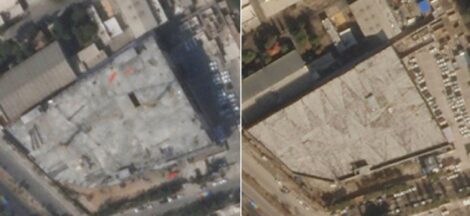Aiding New Delhi’s efforts, Tehran has granted an unprecedented waiver to its customary airspace restrictions, enabling India to deploy multiple chartered flights to repatriate approximately 1,000 of its nationals, primarily students, from the conflict-stricken region of Iran. The first charter, operated by Iran’s state-affiliated Mahan Air, has already landed in Delhi, carrying 290 students. Two more flights are scheduled this weekend.
India formally initiated Operation Sindhu on 18 June to extract its citizens, following a surge in tensions between Tehran and Tel Aviv that has seen missile and drone exchanges across the region. Iran’s decision to open its skies represents a strong diplomatic signal, reflecting cooperation despite an intensifying war environment.
Diplomatic sources in New Delhi confirm that nearly 1,500–2,000 Indian students, along with thousands of other nationals and professionals, remain in Iran, among a total diaspora of around 10,000. By mid‑day on 21 June, India’s Ministry of External Affairs reported that 517 citizens had already been flown back under the evacuation programme.
Mohammad Javad Hosseini, deputy chief of mission at Iran’s embassy in Delhi, described the current airspace exemption as “a special gesture”, noting that it temporarily overrides Iran’s standard closure of its skies amid military exchanges with Israel. He assured that arrangements are in place “to open it for the safe passage of Indian nationals,” speaking just ahead of the first landing of the Mahan Air flight from Mashhad.
The repatriated students, largely from Jammu and Kashmir and cities across northern India, expressed deep relief upon arrival, crediting both governments for facilitating a smooth evacuation. Multiple accounts highlight harrowing experiences, including witnessing missile strikes and aerial bombardment. One medical student from Tehran University described “drones and missiles” flying overhead, prompting urgent relocations and embassy coordination.
Earlier cohorts had been routed via overland corridors. On 19 June, the first group of 110 students was escorted from Urmia in northern Iran to Armenia, through coordinated efforts between Indian missions in Tehran and Yerevan. From there, chartered flights brought them to New Delhi. Since then, further movements have routed evacuees through safer zones like Mashhad and Ashgabat in Turkmenistan.
The evacuation operation is unfolding in a complex diplomatic milieu. India maintains strategic ties both with Iran—anchored by cooperation over Chabahar port and shared regional security concerns—and with Israel, from whom it sources defence technology. Balancing these relationships amid escalating hostilities has compelled India to pursue a strictly humanitarian posture, ensuring the safe conduct of evacuation missions without overt political commentary.
Parallel evacuations by other nations have underscored the broader international response. As conflict intensified following Israel’s attacks on Iranian nuclear facilities on 13 June and Iran’s reprisal strikes, countries including China, Japan, several European Union members, and the United States mobilised their own exit operations. Many of these have relied on land or maritime routes, given Tehran’s generally closed airspace. India’s ability to arrange airlift support from within Iranian territory thus stands out.
Evacuees have praised the promptness and coordination of the rescue effort, donating particular credit to the MEA and Indian embassy staff. An evacuee from Jammu and Kashmir shared that chants of “Vande Mataram” and “Bharat Mata ki Jai” echoed through Delhi airport as they stepped off the aircraft, emblematic of widespread relief. Minister of State for External Affairs Kirti Vardhan Singh was personally present on the tarmac to welcome the first four flights.
Organisers expect two more Mahan Air flights to bring back additional students over the weekend—one from Ashgabat, Turkmenistan, and another directly from Mashhad. MEA spokesperson Randhir Jaiswal confirmed that, with over 517 evacuees already secured, further flights are being arranged based on demand. India is also offering evacuation assistance to stranded nationals from Nepal and Sri Lanka at their respective governments’ request.
Despite the urgency, logistical hurdles persist. Non-commercial aircraft must avoid neighbouring Pakistani airspace and navigate sensitive geopolitical boundaries. Evacuees report disruptions in communication within Iran, including internet blackouts and power outages, especially in urban centres like Tehran. Embassy personnel have maintained 24/7 helplines and control‑room operations to manage coordination efforts.
Operation Sindhu is following in the precedent set by Operation Ganga in 2022, during which India evacuated over 18,000 citizens from Ukraine amid the Russia‑Ukraine war—through rapid charter deployment and coordination with neighbouring transit countries. Current efforts employ similar strategic routing through Armenia and Turkmenistan, enabling real‑time evacuation even as regional conflicts escalate.




 EVM Trust Under Scrutiny as Omar Abdullah Criticises Congress Claims
EVM Trust Under Scrutiny as Omar Abdullah Criticises Congress Claims 